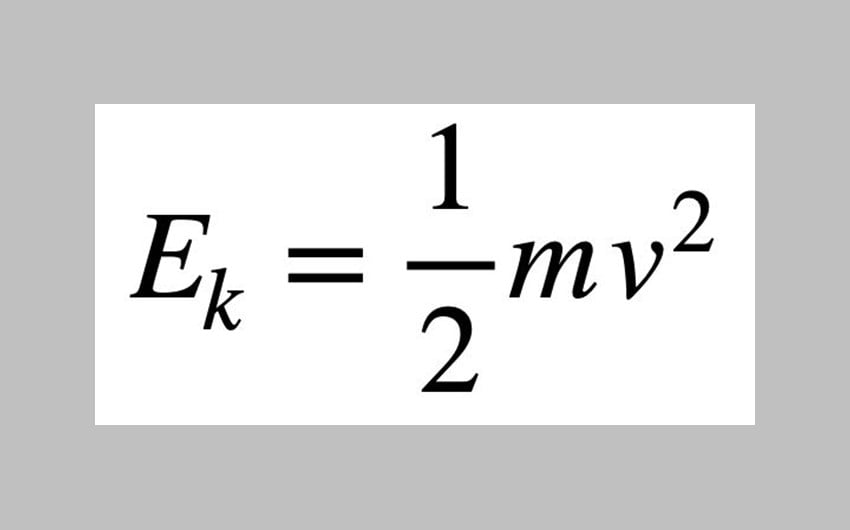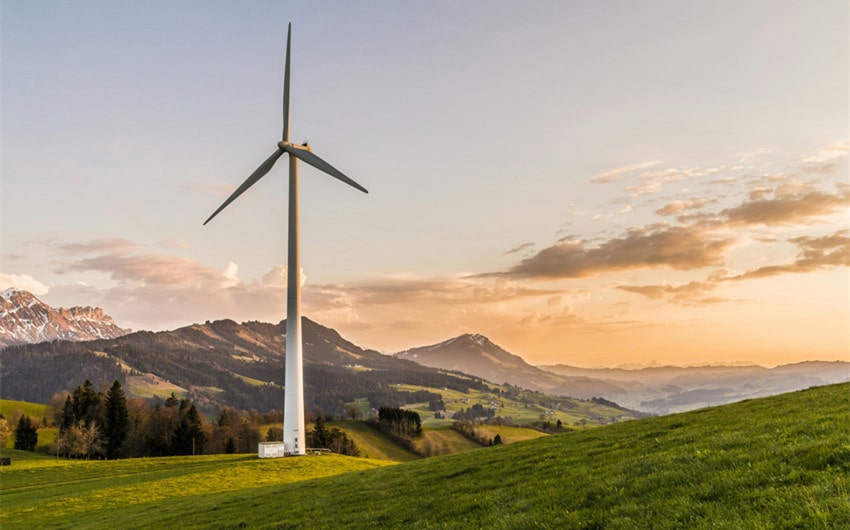What Is Kinetic Energy? Learn About the Energy of Motion
Energy is all around us, powering everything from the cars we drive to the movements we make. But what exactly is kinetic energy? Simply put, it’s the energy an object has due to its motion.
Whether you’re watching a soccer ball soar through the air or feeling the wind on your face as you ride a bike, kinetic energy is at work. In this article, we’ll explore what is kinetic energy, how it functions in our daily lives, and why it’s such an essential concept in understanding the world around us.
Definition of Kinetic Energy

Image source: Pinterest
Kinetic energy is a fundamental concept in physics that describes the energy an object possesses due to its motion. In simple terms, whenever an object moves, it has kinetic energy. The faster an object moves or the heavier it is, the more kinetic energy it has. This energy is a crucial part of many physical processes and plays a significant role in everything from everyday activities to complex scientific phenomena.
Mathematical Formula for Kinetic Energy
The kinetic energy (KE) of an object can be quantified using the formula:
KE=1/2 m v2
Where:
- m represents the mass of the object, measured in kilograms (kg).
- v represents the velocity of the object, measured in meters per second (m/s).
This formula tells us that kinetic energy is directly proportional to the mass of the object and the square of its velocity. Let’s break this down:
- Mass: Mass is a measure of how much matter is in an object. The greater the mass, the more energy it takes to move the object, and consequently, the more kinetic energy it will have once it’s in motion. For example, a heavy truck requires more force to accelerate and decelerate than a small car, and when both are moving at the same speed, the truck will have more kinetic energy.
- Velocity: Velocity is the speed of the object in a given direction. Since velocity is squared in the kinetic energy formula, even small increases in speed can lead to large increases in kinetic energy. For example, doubling the speed of an object will quadruple its kinetic energy. This is why high-speed impacts are so much more destructive than low-speed ones—the kinetic energy involved increases exponentially with speed.
How Kinetic Energy Works

Kinetic energy is the energy that an object possesses due to its motion. Here’s a deeper look into the mechanics of kinetic energy and its role in the physical world.
Generation of Kinetic Energy
Kinetic energy is generated whenever an object is set in motion. This can happen in a variety of ways, such as when a force is applied to an object, causing it to move. For instance, when you kick a soccer ball, your foot applies a force that propels the ball forward, giving it kinetic energy. Similarly, when a car accelerates, the engine provides the necessary force to move the car, converting the fuel’s chemical energy into kinetic energy.
This energy is directly linked to the object’s mass and velocity. The more massive an object is, or the faster it moves, the greater its kinetic energy will be. This is why a speeding truck has much more kinetic energy than a bicycle traveling at the same speed—despite moving at the same velocity, the truck’s larger mass results in significantly more energy.
Transformation and Transfer of Kinetic Energy
Kinetic energy is not static; it can be transformed into other forms of energy or transferred from one object to another. Here’s how this process works:
Transformation to Potential Energy:
One of the most common transformations involving kinetic energy is its conversion to potential energy and vice versa. For instance, when you throw a ball into the air, the kinetic energy from your throw is converted into gravitational potential energy as the ball rises.
At the peak of its arc, the ball’s kinetic energy is at its lowest, and its potential energy is at its highest. As the ball falls back down, the potential energy is converted back into kinetic energy.
Conversion to Other Energy Forms:
Kinetic energy can also be converted into other types of energy, such as thermal energy (heat) or sound energy. For example, when you apply brakes to a moving car, the kinetic energy is converted into thermal energy through friction, causing the brakes to heat up.
Similarly, when a hammer strikes a nail, the kinetic energy of the hammer is partially converted into sound energy, which is why you hear a noise when the hammer hits the nail.
Energy Transfer Between Objects:
Kinetic energy can be transferred from one object to another through collisions or contact. For example, in a game of pool, when the cue ball strikes another ball, some of the kinetic energy from the cue ball is transferred to the other ball, causing it to move. The amount of energy transferred depends on the masses and velocities of the objects involved.
Examples of Kinetic Energy in Everyday Life

Kinetic energy is a concept that extends far beyond physics textbooks—it’s a fundamental part of our daily lives. Every time something moves, kinetic energy is at play, whether it’s in the natural world or in human-made systems. Here are some common examples of kinetic energy in action that you might encounter in everyday life:
1. Moving Vehicles
Description:
Every time you drive a car, ride a bicycle, or take a train, kinetic energy is at work. Vehicles in motion, regardless of their size or speed, possess kinetic energy. The amount of kinetic energy depends on the vehicle’s mass and its velocity. This is why larger vehicles like trucks have more kinetic energy than smaller vehicles like motorcycles when traveling at the same speed.
How It Works:
When you press the accelerator pedal in a car, the engine converts chemical energy from the fuel into mechanical energy, which propels the car forward, generating kinetic energy. The faster the car goes, the more kinetic energy it accumulates. When you apply the brakes, this kinetic energy is converted into heat through friction, slowing the car down.
Practical Impact:
Understanding kinetic energy is crucial in vehicle design and safety. For example, braking systems are designed to efficiently dissipate kinetic energy to ensure vehicles can stop quickly and safely. Additionally, the kinetic energy of moving vehicles is a key consideration in crash safety analysis and the development of impact-resistant materials.
2. Sports
Description:
Kinetic energy is a fundamental aspect of almost every sport. Whether it’s a soccer ball being kicked, a basketball being dribbled, or a baseball being thrown, the movement of objects and athletes involves kinetic energy. The energy is generated when players apply force to move the ball, their bodies, or any equipment involved in the game.
How It Works:
In sports like soccer, when a player kicks the ball, their leg muscles apply a force that propels the ball forward. The ball’s mass and the speed at which it moves determine its kinetic energy. The harder the kick (i.e., the greater the force applied), the faster the ball moves, and the more kinetic energy it has. Similarly, when a sprinter runs, their body’s kinetic energy increases with their speed.
Practical Impact:
Athletes and coaches often use the principles of kinetic energy to improve performance. For instance, understanding how to maximize kinetic energy in a golf swing can lead to longer drives, while reducing kinetic energy through efficient braking is essential in cycling. In sports science, analyzing kinetic energy helps optimize training techniques and improve equipment design, such as creating lighter and more aerodynamic sports gear.
3. Falling Objects
Description:
Whenever an object falls, it gains kinetic energy as it accelerates toward the ground due to gravity. This is a clear demonstration of how potential energy (the energy stored due to an object’s position) is converted into kinetic energy as the object begins to move.
How It Works:
Imagine you’re holding a book at a certain height above the ground. The book has gravitational potential energy due to its elevated position. Once you let go of the book, gravity pulls it downward, and its potential energy is gradually converted into kinetic energy as it accelerates. By the time the book hits the ground, all the potential energy has been transformed into kinetic energy.
Practical Impact:
Understanding the kinetic energy of falling objects is important in various fields, such as construction and safety engineering. For example, workers on construction sites wear hard hats to protect themselves from falling objects, which can generate significant kinetic energy and cause injury. Additionally, the study of kinetic energy is crucial in designing safety nets, airbags, and other devices that mitigate the impact of falling objects.
4. Wind and Water Currents
Description:
Natural elements like wind and water currents are prime examples of kinetic energy in the environment. Wind, caused by air movement, and flowing water both possess kinetic energy, which can be harnessed and utilized in various ways.
How It Works:
Wind is essentially moving air, and as it flows over the surface of the Earth, it carries kinetic energy. This energy can be captured by wind turbines, which convert the kinetic energy of the wind into electrical energy for use in homes and businesses. Similarly, water in rivers, streams, and oceans carries kinetic energy as it flows. Hydroelectric power plants harness this kinetic energy by using the movement of water to turn turbines, which then generate electricity.
Practical Impact:
The kinetic energy of wind and water is a valuable resource for renewable energy. Wind farms and hydroelectric dams are designed to capture and convert this energy into electricity, providing a sustainable alternative to fossil fuels. Understanding the kinetic energy in natural currents is also important for environmental studies, such as predicting the impact of water flow on erosion and habitat formation.
5. Amusement Park Rides
Description:
Amusement park rides, particularly roller coasters, are thrilling demonstrations of kinetic energy in action. As the ride moves, kinetic energy is constantly being converted from and into potential energy, creating the dynamic motion that makes these rides so exciting.
How It Works:
At the start of a roller coaster ride, the cars are typically pulled up to a high point, where they accumulate potential energy. As they descend, this potential energy is converted into kinetic energy, propelling the cars at high speeds through loops, turns, and drops. The kinetic energy peaks at the lowest points of the ride, where the cars are moving fastest. As the cars ascend again, some of this kinetic energy is converted back into potential energy.
Practical Impact:
Engineers who design roller coasters and other amusement park rides use principles of kinetic and potential energy to ensure that the rides are both thrilling and safe. By carefully calculating the energy transformations throughout the ride, they can control the speed, acceleration, and forces experienced by riders, ensuring an exhilarating experience without compromising safety.
6. Household Appliances
Description:
Many common household appliances operate on principles of kinetic energy. From the spinning drum of a washing machine to the blades of a fan, these appliances convert electrical energy into kinetic energy to perform their functions.
How It Works:
Consider a washing machine: when you start a cycle, the machine’s motor converts electrical energy into kinetic energy, causing the drum to spin. This spinning motion, combined with water and detergent, cleans your clothes. Similarly, a ceiling fan works by converting electrical energy into kinetic energy, which then causes the blades to spin and circulate air throughout the room.
Practical Impact:
Understanding kinetic energy in household appliances can help consumers choose more energy-efficient products. For instance, washing machines with variable-speed motors can adjust the kinetic energy output depending on the load, leading to more efficient water and energy use. Additionally, understanding how kinetic energy works in these appliances can also lead to better maintenance and usage practices, ultimately extending their lifespan.
Kinetic Energy and the Law of Conservation of Energy

Kinetic energy plays a central role in one of the most fundamental principles of physics: the law of conservation of energy. This law states that energy cannot be created or destroyed, only transformed from one form to another. Understanding how kinetic energy interacts with this law provides valuable insights into the behavior of physical systems, from simple mechanical processes to complex natural phenomena.
The Law of Conservation of Energy
The law of conservation of energy is a foundational concept in physics that applies to all physical processes. According to this law, the total energy within a closed system remains constant over time, regardless of the processes happening within the system. While energy can change forms—such as from kinetic energy to potential energy or from chemical energy to thermal energy—the total amount of energy remains the same.
For example, in a closed system like a pendulum, energy continually shifts between kinetic and potential energy. As the pendulum swings, its energy alternates between kinetic energy (when the pendulum is moving fastest at the lowest point of the swing) and potential energy (when the pendulum is at its highest point and momentarily stationary). Despite these transformations, the total energy of the pendulum system remains constant, illustrating the law of conservation of energy.
Energy Transformations and Real-World Applications
The conservation of energy principle is not only a theoretical concept but also has practical implications in a wide range of fields, from engineering to environmental science. Understanding how kinetic energy interacts with other forms of energy under this law helps in designing systems that are efficient, safe, and sustainable.
Engineering and Mechanical Systems
In engineering, the conservation of energy principle is used to design machines and structures that efficiently manage energy transformations. For instance, in car engines, chemical energy from fuel is converted into kinetic energy to move the vehicle.
However, some of this energy is inevitably lost as heat due to friction and air resistance. By understanding and minimizing these losses, engineers can design more fuel-efficient vehicles.
Renewable Energy
In renewable energy systems, the conservation of energy principle guides the conversion of natural kinetic energy into usable forms. Wind turbines, for example, capture the kinetic energy of moving air and convert it into electrical energy.
Similarly, hydroelectric power plants use the kinetic energy of flowing water to generate electricity. These systems rely on the predictable transformation of kinetic energy under the conservation of energy law to produce sustainable energy.
Safety and Impact Studies
In safety engineering, understanding how kinetic energy is conserved and transformed is crucial in analyzing the impact forces during collisions. For example, in automotive crash tests, the kinetic energy of a moving vehicle is rapidly converted into other forms of energy (sound, heat, deformation) upon impact.
By studying these energy transformations, engineers can design crumple zones and other safety features that dissipate kinetic energy more effectively, reducing the force transmitted to passengers and increasing safety.
Kinetic Energy Losses and Non-Conservative Forces
While the law of conservation of energy holds true, in real-world scenarios, not all kinetic energy is perfectly conserved due to non-conservative forces such as friction, air resistance, and inelastic collisions. These forces convert some of the kinetic energy into other forms, like heat or sound, which are often considered energy losses within the system.
Friction: Friction is a force that opposes motion and converts kinetic energy into thermal energy (heat). For example, when you rub your hands together, the kinetic energy from the motion of your hands is converted into heat, which you can feel as warmth. In machines, frictional losses are a significant factor in reducing efficiency, and engineers work to minimize these losses through lubrication and material design.
Air Resistance: Air resistance (drag) acts against the motion of objects moving through the air, converting kinetic energy into heat and sometimes sound. For example, when a car speeds down the highway, it experiences air resistance that reduces its kinetic energy, requiring the engine to work harder to maintain speed. Streamlined designs and aerodynamic features are used to reduce air resistance and improve energy efficiency.
Inelastic Collisions: In an inelastic collision, some of the kinetic energy is converted into other forms of energy, such as heat, sound, and deformation. For example, when two cars collide, the kinetic energy is partially transformed into the crumpling of metal and the sound of the impact. In contrast, an elastic collision, like two billiard balls striking each other, conserves kinetic energy more effectively, with most energy remaining in the form of motion.







